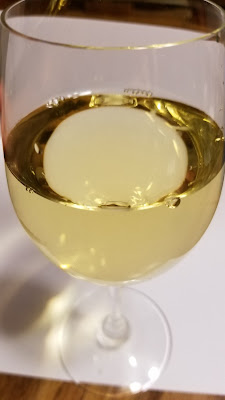So the Guinness that you're used to ordering at a bar or seeing in the stores is their "Guinness Draught", known by its iconic gold harp and black bottle and one of the most popular beers in the world. Now owned by Diageo, this 258-year-old brewery was once the largest and most productive brewery in the world and in 2011, it produced almost a quarter of a billion gallons of beer. But as it turns out, this brewery makes many more offerings than the everpresent inky-black draught, some of which are just now making their introductions to North American markets. You may see their "Foreign Extra Stout" or their "Harp" lager in stores, and with the explosion of fancy craft beers over the last decade, sometimes the big brewers want to make something special...so enter this series.
This is called "The 1798 Limited Edition" double extra stout, and at first glance, seems a bit superlative, a la "double secret probation" from Animal House. But the terms "double" and "extra" have historical meaning, especially for English beers: these terms denote the strength and gravity of the beer. So we've got a special beer, heavier than the usual but still made with the usual roasted barley and 100% crystal malts, and my research reveals that this beer is finished over oak chips from the original beer vats in Guinness' oldest brewhouse - Old Vat House No. 1. Pretty neat! It's also been aged for 18 months in the cask, for all that wood-finished goodness. So this looks really cool, and let's dive in.
Pours a root beer color, substantially lighter than the normal Guinness draught. It's also carbonated, not nitrogenated, so is fizzy (although generates a thin, creamy layer of tan-colored head.)
Smooth and a bit oily at first, the primary flavor I detect is is cocoa mixed with a sort of burnt sugar / brown sugar flavor. As I have a few more sips, more recognizable flavors come through - molasses, raisin, some more of that cocoa. A little bit of licorice but not too much, thankfully. It's not super thick, basically the same consistency as the Draught, but more oily I think.
It's rather interesting - quite a divergence from the usual Guinness - and at first hard to place, but I can find some nice parallels to the Boston Beer Co.'s "Sam Adams Tetravis" in terms of that raisin and burnt sugar flavor. It certainly lacks that almost-bland quality that you'd find in a Guinness draught; it's more on the imperial stout end of things, specifically with the oiliness and the complexity of flavors. I'm also happy that in terms of consistency, it's not overly heavy. Overall quite good, and although only 2400 bottles have been made worldwide, if you can get your hands on this, please try it - it's interestingly different than the usual and worth a try...especially if you don't like other Guinness offerings!



















